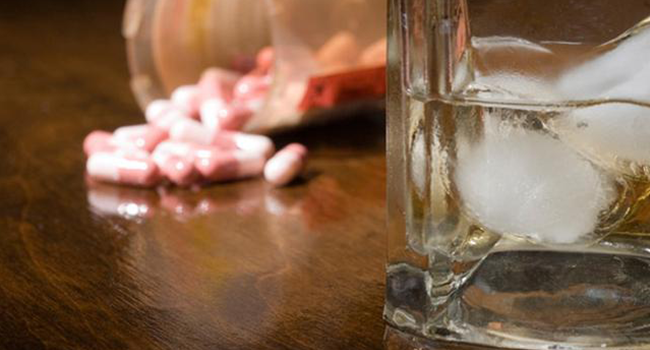It is never a sensible idea to mix drugs with alcohol, but in the case of those people who combine Xanax and alcohol it must be made clear that this is a potentially deadly mix.
Let’s take a look at why this ‘cocktail’ can be so lethal, the problems it can cause and why it really is something to avoid.
Xanax – what is it?
The generic name for Xanax is Alprazolam. It is a benzodiazepine, this means it belongs to the family of tranquillisers.
Xanax – what is it and what is it used for?
This prescribed medication is extremely powerful and can be addictive. Among the conditions it is used to treat are those suffering from anxiety disorders, those who suffer from anxiety due to depression and those who suffer panic attacks.
Definitions of anxiety:
It is important to understand that anxiety is a normal, human experience. We will all suffer from anxiety at some stage in our life. The problem is that not everyone experiences symptoms in the same way. Some people are affected far more, and for far longer than others.
Anxiety shows itself in a variety of forms. At its mildest you will feel uneasy while the opposite end of this spectrum is in those who suffer from panic attacks that range from mild to extremely severe.
Sufferers regularly report that the physical symptoms of an anxiety attack are frightening. In fact the emotion of fear is a central factor in those who suffer anxiety. This unpleasant feeling of apprehension compounds and is known to include physical symptoms.
Make no mistake, severe cases of anxiety can debilitate the sufferer. This is why it is so important for anyone suffering from an anxiety disorder to seek professional help as soon as possible.
When doing so it is important that you heed the advice given and if you are prescribed Xanax to help your condition that you also take very seriously the reasons as to why Xanax and alcohol should never be combined.
What causes anxiety?
This is not an easy question to answer because there is no one cause for anxiety. It has officially been broken down into three parts. These are brain chemistry, heredity and life experiences.
Brain Chemistry
This is understood to trigger anxiety disorders. Chemical messengers in your brain (known as Neurotransmitters) regulate your thought and feelings. Those who have a chemical imbalance have problems with the messages sent from the brain.
Two primary neurotransmitters are serotonin and dopamine. It is understood that a major cause of depression and anxiousness suffer from such chemical imbalances.
There is also scientific evidence that problems related to anxiety such as stress, panic and situations where your fears are exaggerated are the result of an imbalance between the right and left hemispheres of the brain.
Heredity and/or Genetics:
Studies have shown that anxiety disorders run in families. It is known that children of parents or close relatives suffering from an anxiety disorder are at a much higher risk of developing an anxiety disorder in the future.
Those children living in families where fear and anxiety are evident on a daily basis are at a higher risk of being affected by such problems as they move into adulthood.
Life experiences:
Experts also believe that anxiety is a learned behaviour. An example here is those who have suffered a life of poverty, abuse or violence. Such events experienced in childhood increase fears that over time can develop into anxiety disorders.
Why mixing Xanax and alcohol is a ‘No-No’
Those suffering from anxiety, depression or any other condition that calls for Xanax to be prescribed really must avoid the use of alcohol whilst on their course of treatment.
We will look at why, and also cite some of the ways in which you are compounding the potential mental and physical health problems if you opt to mix the two.
It is very important to understand that Xanax and alcohol are both classed as central nervous system depressants.
This means that both substances affect your brain function and will slow down given reactions.
Although they do not work on the same sets of neurotransmitters they both tend to produce similar effects when it comes to such things as your breathing and heart rate.
The use of alcohol while using Xanax will increase the effects of both and can lead to a potentially fatal outcome.
Here are just 4 examples of many:
The use of Xanax for panic attacks:
Users who are taking Xanax to help them deal with panic attacks and combine alcohol with the drug will initially feel a positive effect in terms of lower agitation levels, unfortunately the effects do not stop there. This combination will increase their effect. The outcome is that many find it difficult to focus and in more severe cases they will become incommunicative.
Increasing the intenseness of a panic attack:
While the use of Xanax on its own has proven to ease a panic attack, if you add alcohol to the mix there is a good chance you will actually trigger a more intensive attack.
Increased irritability:
Some alprazolam users find irritability is never far from the surface. By mixing Xanax and alcohol this can become completely out of hand and they react with unreasonable anger at the least little thing.
Increased sedation:
In more severe cases combining the two substances can increase sedation to levels that are not only uncomfortable, but can be life threatening.
Dependent upon the amount of each substance you take there your heart rate may be lowered to a level that is dangerous. There is also a possibility that your breathing will become seriously impaired.
If a user finds themselves suffering from either or both of the above serious problems they require immediate medical attention. Without expert medical help there is a grave danger that such symptoms will be fatal.
Please do not dice with death:
To put it in a more simplistic way, you should not mix Xanax and alcohol at all. By doing so you are leaving death’s door ajar, the more you combine the two, the further you are pushing that door open.














